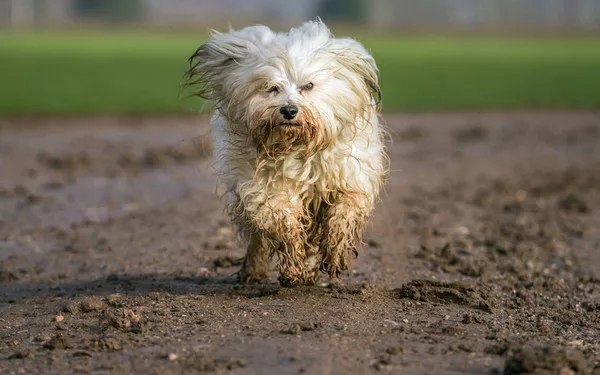In the world of canine companions, few breeds capture the imagination and curiosity quite like the Tibetan Mastiff. With its majestic appearance and ancient lineage, the Tibetan Mastiff has long been a subject of fascination for dog enthusiasts and researchers alike. One intriguing question that has lingered is whether Tibetan Mastiffs are related to wolves. This article delves into the history, genetics, and behaviors of Tibetan Mastiffs to unravel the mysteries surrounding their potential connection to their wild ancestors.
Historical Context: The Origins of the Tibetan Mastiff
To comprehend the possible link between Tibetan Mastiffs and wolves, it is essential to explore the historical roots of this enigmatic breed. The Tibetan Mastiff can trace its ancestry back thousands of years to the Himalayan region, where it served as a guardian of monasteries, villages, and livestock. This ancient lineage has contributed to the breed’s unique characteristics, including a thick double coat, a distinctive mane, and a strong, imposing build.
Tibetan Mastiffs in Tibetan Culture
Tibetan Mastiffs hold a special place in Tibetan culture, revered for their loyalty, courage, and unwavering protective instincts. Often depicted in ancient Tibetan art and literature, these dogs symbolize strength and resilience. Understanding the historical context is crucial in unraveling the potential connection between Tibetan Mastiffs and wolves.
Genetic Analysis: Unraveling the Canine Genome
To determine the genetic relationship between Tibetan Mastiffs and wolves, scientists have turned to advanced genomic studies. The canine genome, a complex tapestry of DNA, offers insights into the evolutionary paths of different dog breeds. Researchers have scrutinized the genetic makeup of Tibetan Mastiffs to identify any shared ancestry with their wild counterparts.
Genetic Markers and Ancestral Traces
Recent genetic studies have identified specific markers in the Tibetan Mastiff genome that hint at a close relationship with wolves. These markers, linked to traits such as coat color, size, and behavior, suggest a shared ancestry that goes beyond mere coincidence. By examining these genetic imprints, scientists aim to unravel the intricate web connecting Tibetan Mastiffs to their wild ancestors.
Behavioral Parallels: Insights into Canine Instincts
Beyond genetics, the behaviors exhibited by Tibetan Mastiffs offer additional clues to their potential connection to wolves. Observing how these dogs interact with their environment, their families, and other animals can provide valuable insights into their innate instincts and social structures.
Guardian Instincts and Pack Mentality
Tibetan Mastiffs are renowned for their strong guardian instincts, a trait that aligns with the pack mentality observed in wolves. Whether protecting livestock in the Himalayas or guarding a modern-day home, these dogs display a deep sense of responsibility and loyalty. Examining the similarities in their protective behaviors may shed light on the shared evolutionary roots of Tibetan Mastiffs and wolves.
Evolutionary Adaptations: Surviving the Ages
The harsh Himalayan environment has played a crucial role in shaping the physical attributes of Tibetan Mastiffs. Surviving in a challenging landscape required adaptations that mirror those seen in their wild counterparts.
Adaptations to High Altitudes
Tibetan Mastiffs are well-adapted to high-altitude living, thriving in conditions where oxygen levels are lower than in many other regions. This adaptation is reminiscent of the physiological changes seen in wolves residing in elevated terrains. Exploring these shared adaptations provides a deeper understanding of how Tibetan Mastiffs may have evolved alongside wolves over centuries.
Wolves and Domestication: A Complex Relationship
The domestication of dogs is a complex and multifaceted process that has unfolded over thousands of years. Exploring the intertwined history of wolves and early humans reveals the intricate dance that led to the development of the diverse canine breeds we know today.
Domestication and Coexistence
The process of domestication involves more than taming wild animals; it encompasses a mutual relationship where both humans and animals benefit. The symbiotic coexistence of wolves and early humans likely played a pivotal role in shaping the genetic and behavioral traits of dogs, including the Tibetan Mastiff.
See Also:Why Tibetan Mastiffs Face Bans?
Contemporary Perspective: Tibetan Mastiffs in the Modern World
As we unravel the historical and genetic connections between Tibetan Mastiffs and wolves, it is crucial to consider the breed’s role in contemporary society. The demands of the modern world have influenced the breed’s characteristics and behaviors, raising questions about the preservation of its ancient lineage.
Challenges in Conservation Efforts
Preserving the unique qualities of Tibetan Mastiffs requires a delicate balance between maintaining their historical traits and adapting to changing societal needs. Conservation efforts face challenges in navigating the fine line between honoring the breed’s ancient heritage and addressing contemporary demands for specific traits.
Conclusion: The Enigma Persists
In the quest to understand whether Tibetan Mastiffs are related to wolves, we navigate a landscape of genetics, history, and behavior. The evidence suggests a compelling connection, woven through centuries of shared evolution and mutual survival. As we unravel the enigma surrounding Tibetan Mastiffs and their link to wolves, one thing remains clear—the bond between humans and these majestic dogs transcends time, echoing the ancient partnership that shaped the course of canine history.
Related Topics:
What Is the Most Expensive Chinese Tibetan Mastiff?
What Is the PSI of a Tibetan Mastiff?
Why Tibetan Mastiffs Sold for a Million Dollars?


























